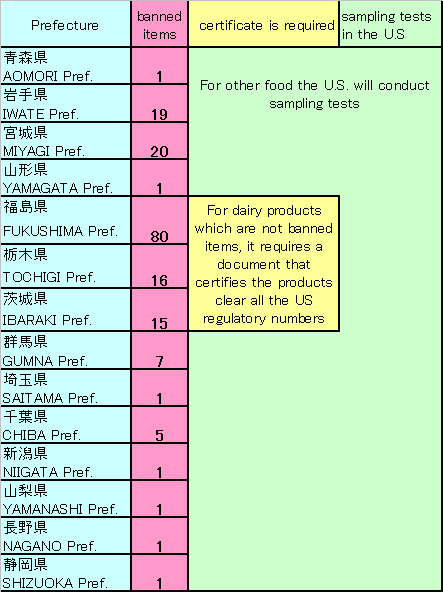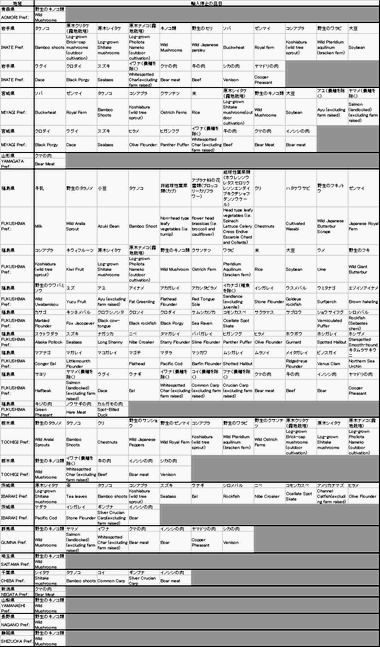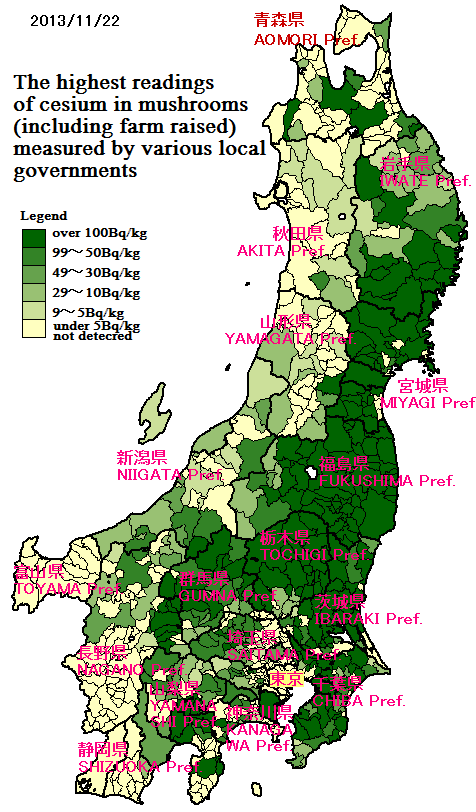Original Text from Zukunashi no Hiyamizu's Blog : http://inventsolitude.sblo.jp/article/98972069.html
日本語原文 : http://inventsolitude.sblo.jp/article/98548281.html
You may feel uneasy since you can't find much information on the progress of the clean-up effort at Fukushima accident or food contamination. Here are some information and examples of what Japanese people who consciously try to avoid exposure to radioactivity do everyday.
1. Contamination in Food
In Japan, the current safety limit for cesium is 100 Bq/kg.
Three years after the Fukushima Nuclear Plant accident, radiation levels in the atmosphere and levels of contamination in food are lower compared to the time shortly after the accident. But contaminated food is still found, for example, more than 100Bq/kg in wild plants.
By looking at which food imported from Japan that America bans we can tell what food is highly contaminated. America has the most detailed list of regulations in the world.
It lists banned food items from each prefecture. For dairy products from the three prefectures including Fukushima, it requires a document that certifies the products clear all the US regulatory numbers. For other food, the U.S. will conduct sampling tests.

Roughly speaking, the more items are restricted, the closer the area is from Fukushima Daiichi. The U.S. uses stricter limits than Japan.
2. Banned Food Items from Each Area
You see a lot of mushrooms, along with rice, beef, vegetables, and soy. Various ocean products are listed too.

3. Mushrooms Prove that the Large Areas are Contaminated
After the Chernobyl accident, it was found that mushrooms condense radionuclides. This map shows the highest readings of cesium in mushrooms measured by various local governments. You can see wide areas in Eastern Japan are contaminated with cesium.

Mushrooms absorb cesium on the surface more than other produce, but in highly contaminated areas rice and legumes are also contaminated.
4 Health Problems from Internal Exposure are Already Observed
When you take in radionuclides with food, you are internally exposed. Radionuclides are mainly heavy metals, so even without radioactivity they are hazardous to human body.
It's not yet known how much damage internal exposure will cause. This is because we can't test this on animals and also because it is usually the case that it takes multiple years for palpable damage to emerge.
However, among the children who had internal exposure through respiration, there is a higher rate of thyroid abnormality including thyroid cancer.
Among people who have been living in Japan since before the Fukushima accident, a number of various health problems is reported, including sudden death and cancer.
Some of the food regularly consumed by Japanese people is highly contaminated. Some try to avoid them, and the others don't care at all.
5. Many Japanese Say that Radioactivity is Not Dangerous, but They Pretend Not to Notice Those Who Have Health Problems.
When you voice your worry about radioactivity, many would say there is no need to worry about. I'm guessing those people will experience health problems in the near future.
Don't feel safe just because many Japanese people say it is safe. It's wise to worry and protect yourselves against radioactivity.
0 件のコメント:
コメントを投稿